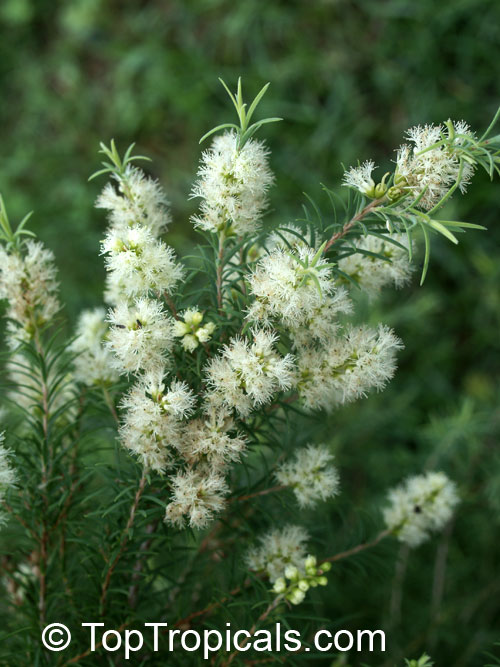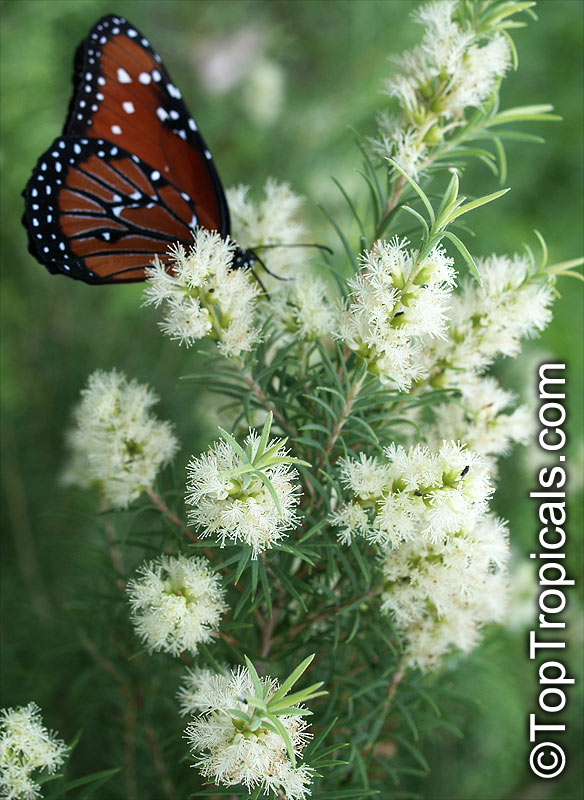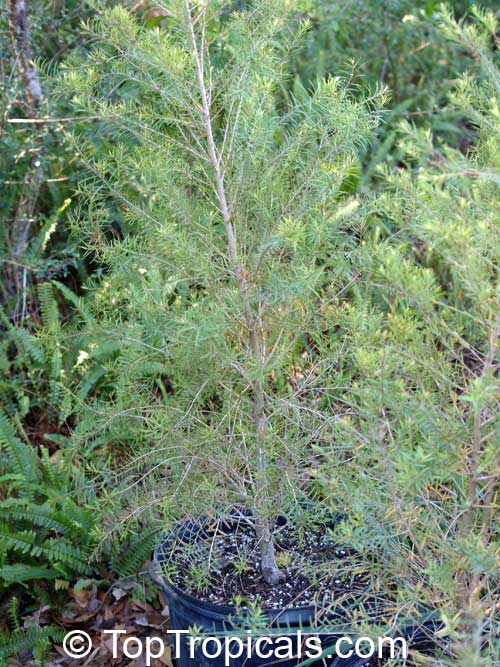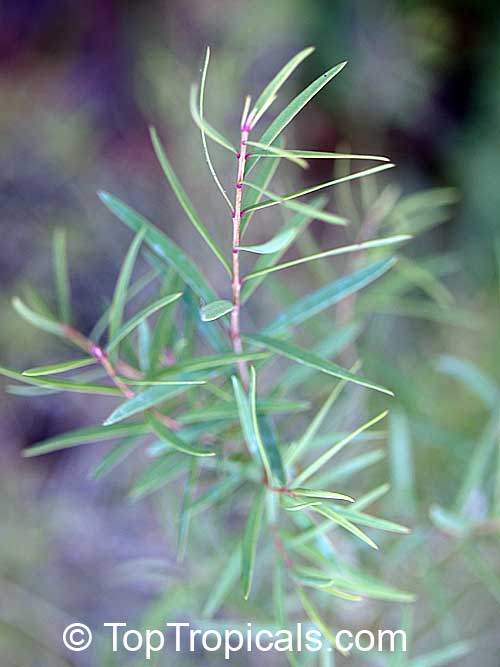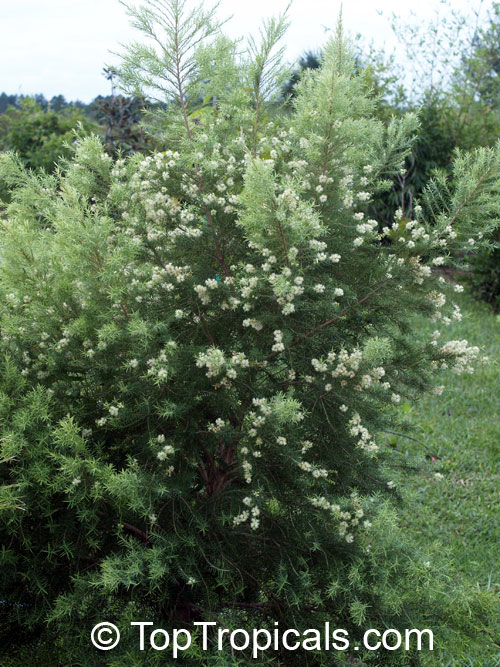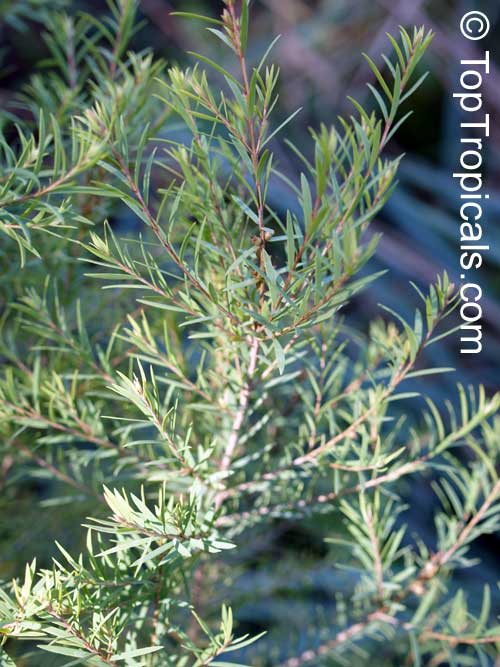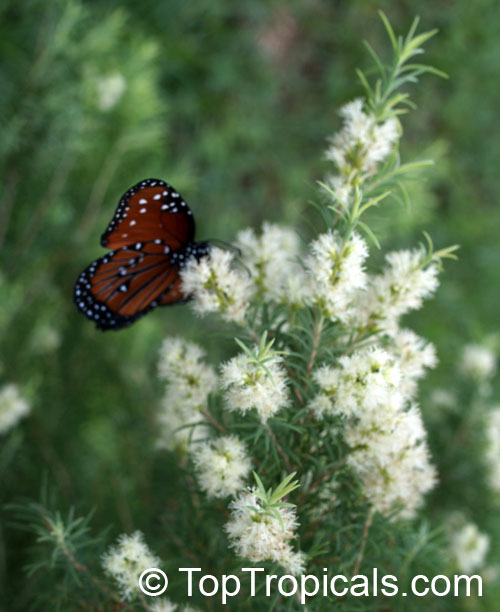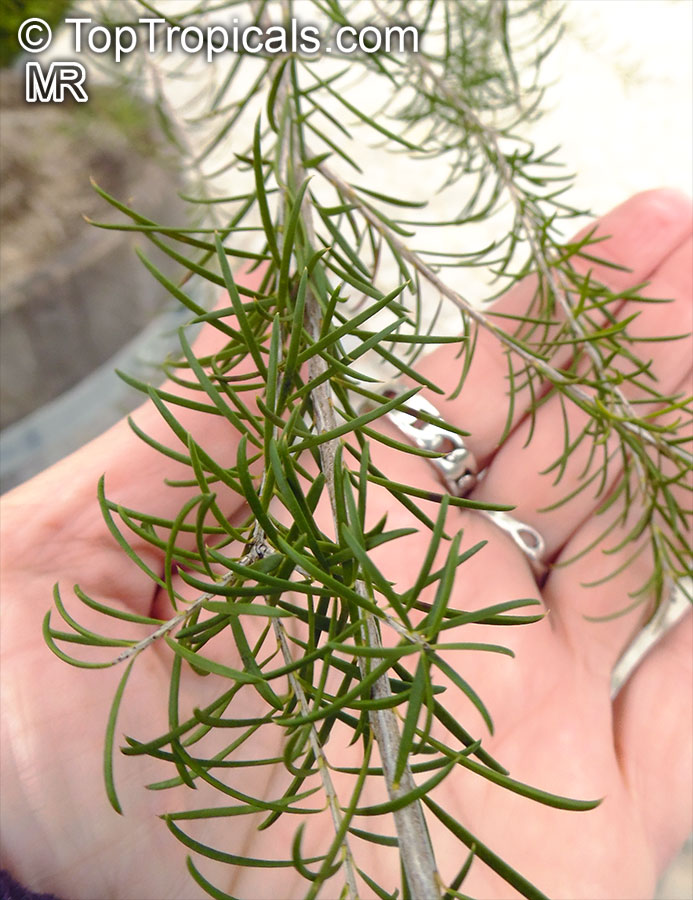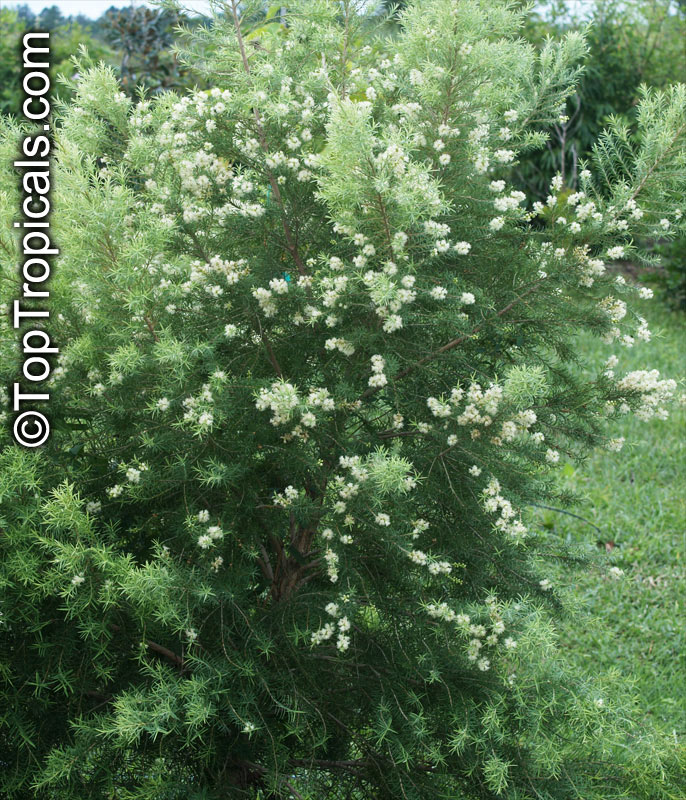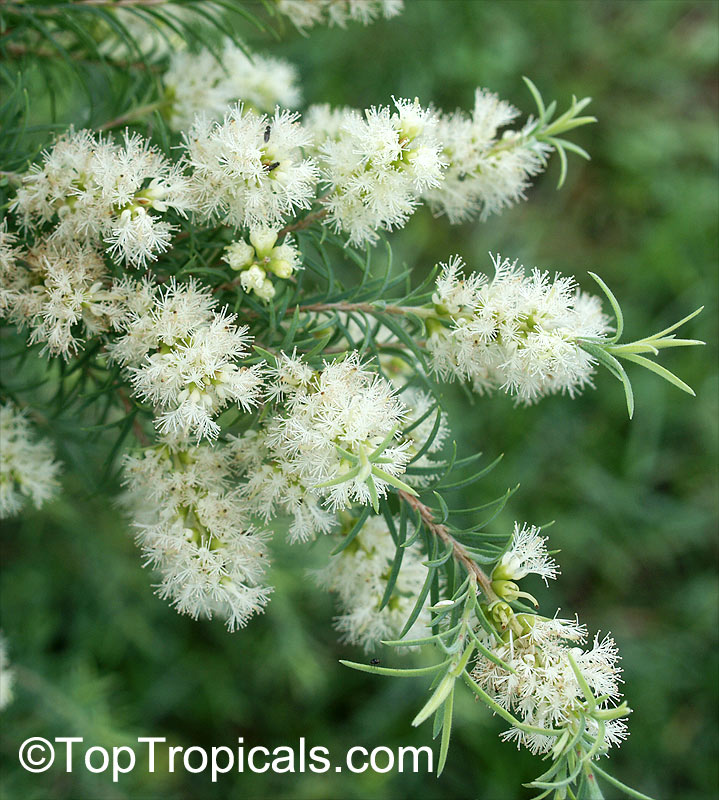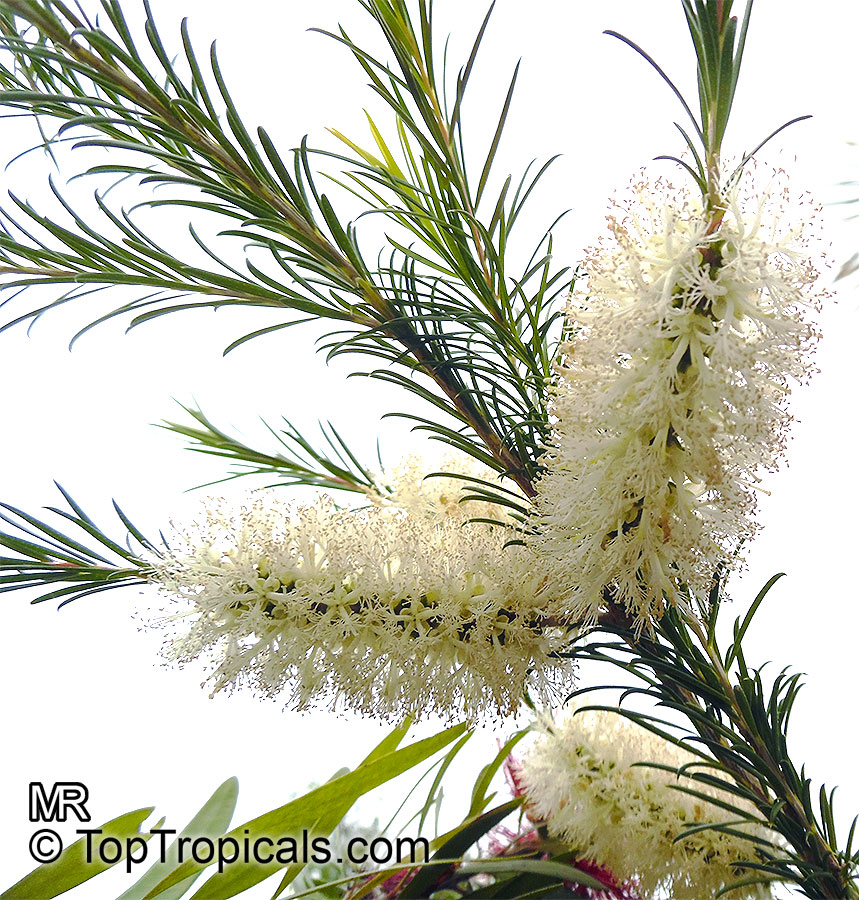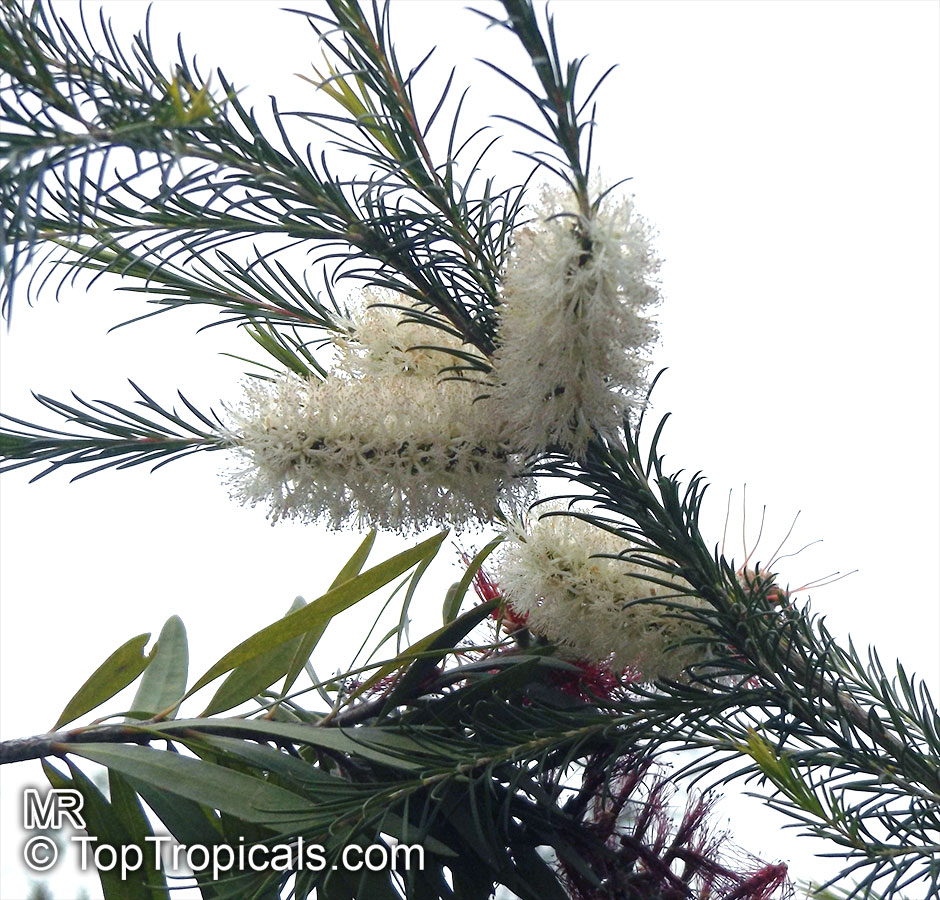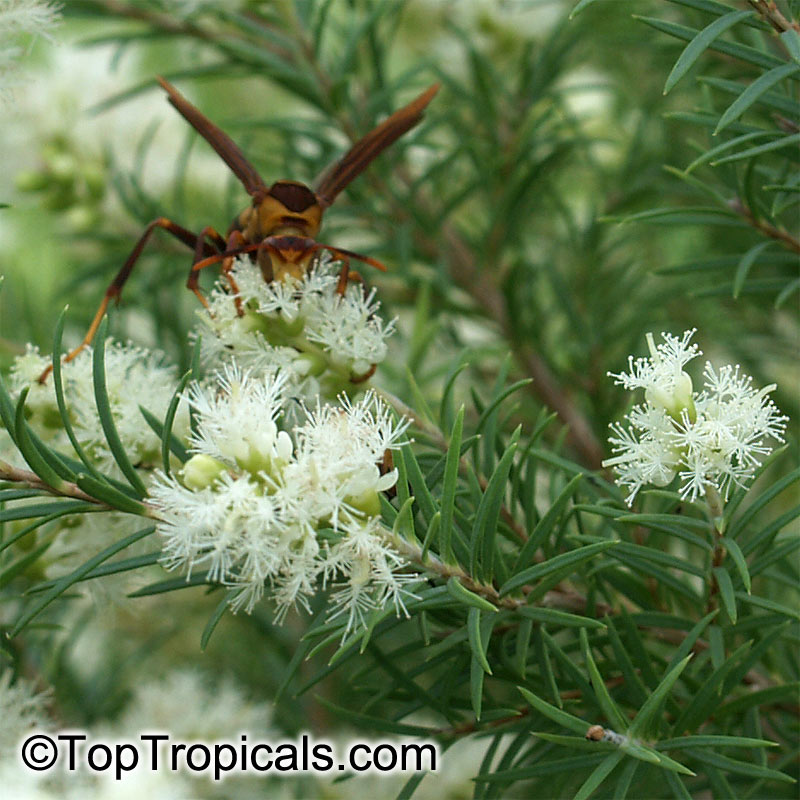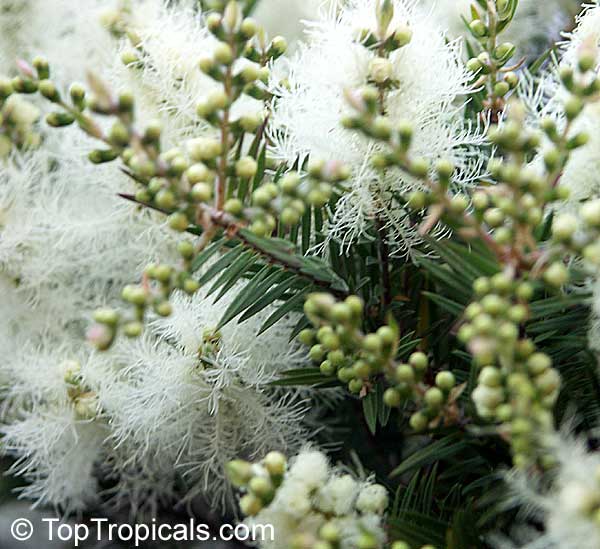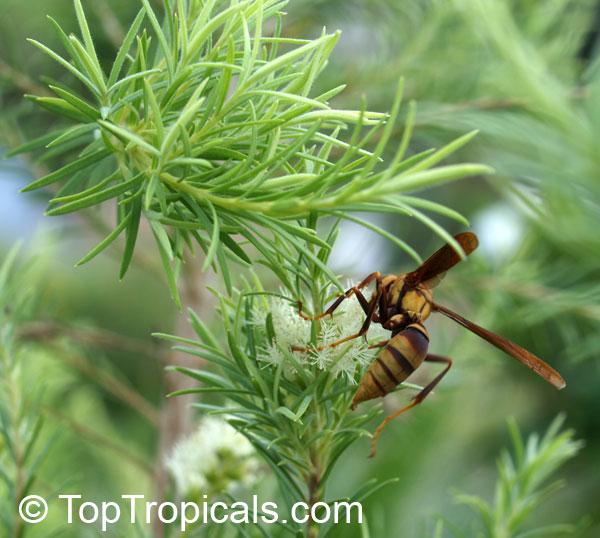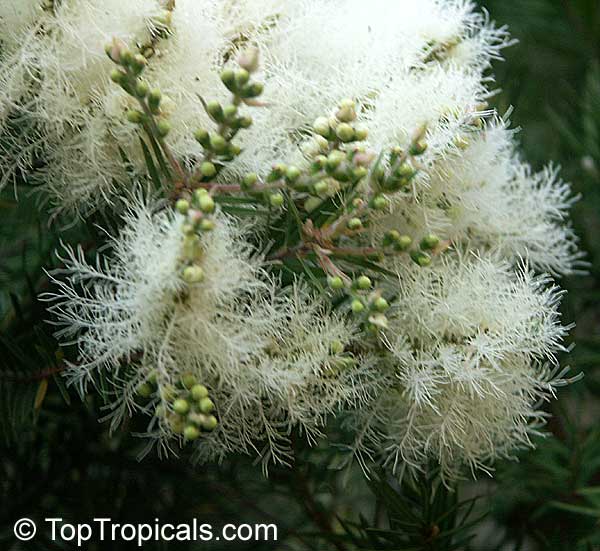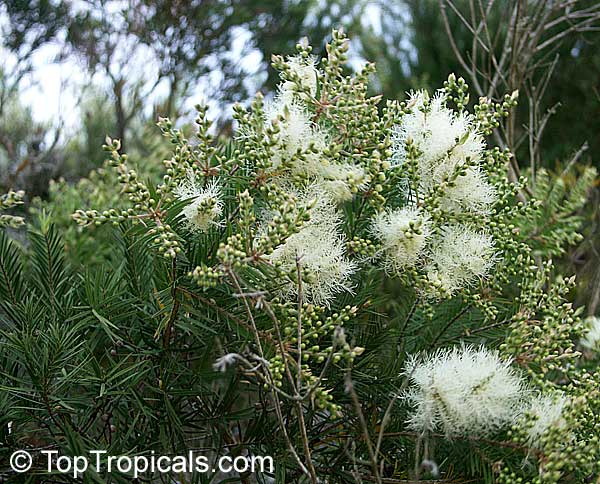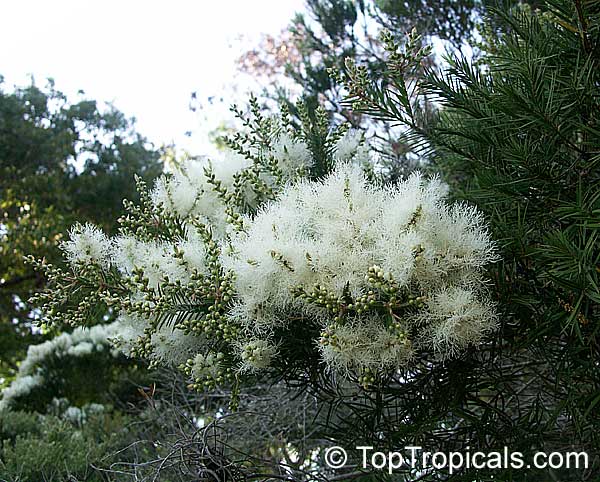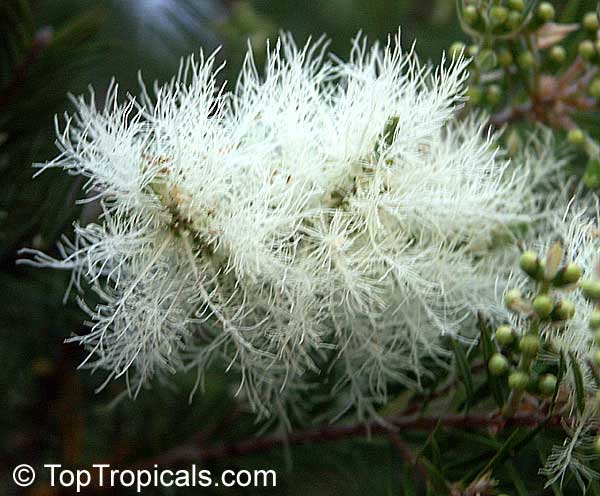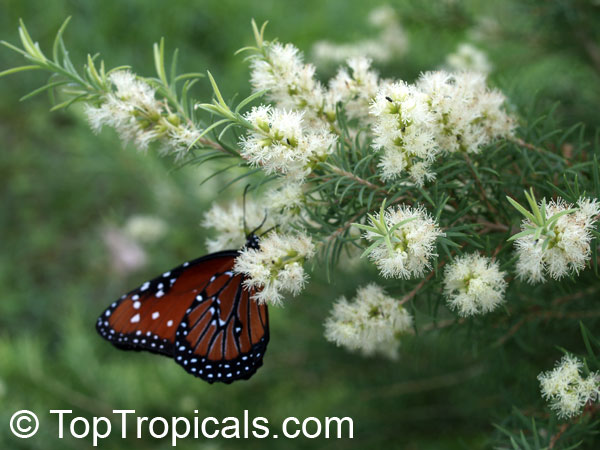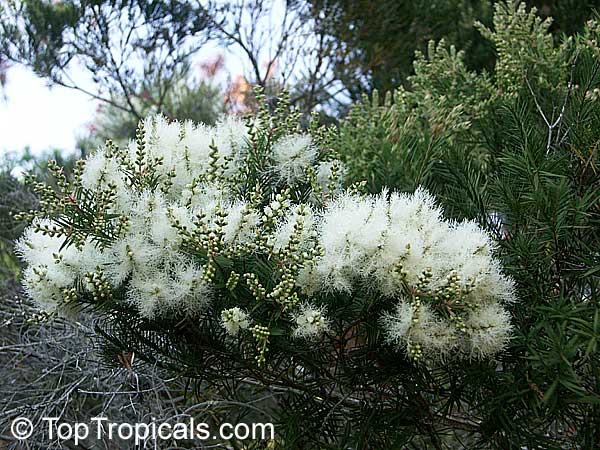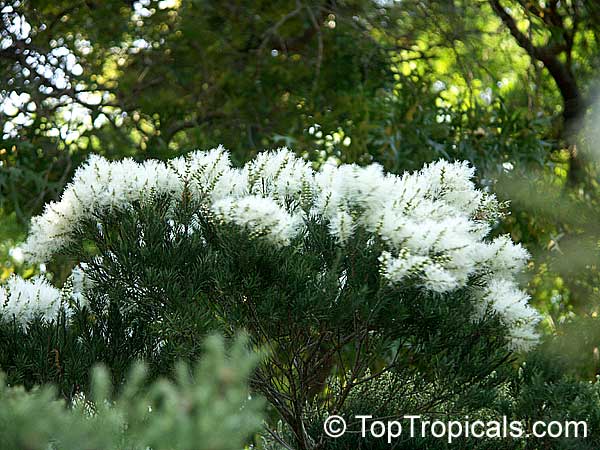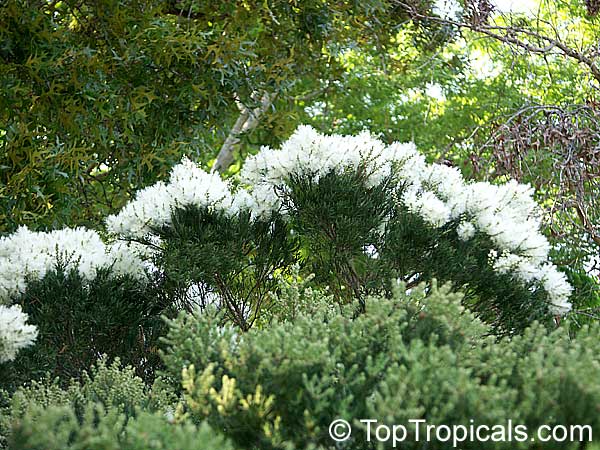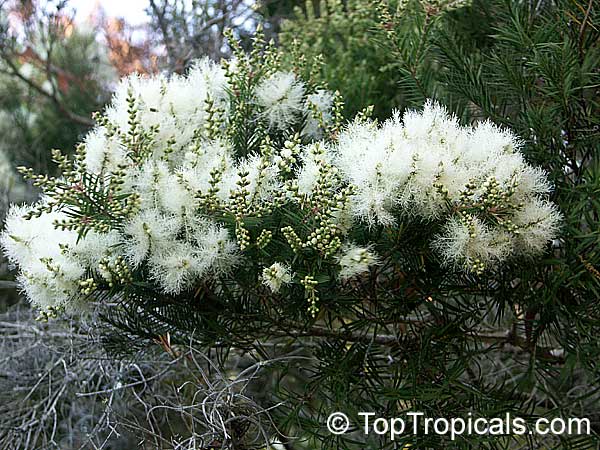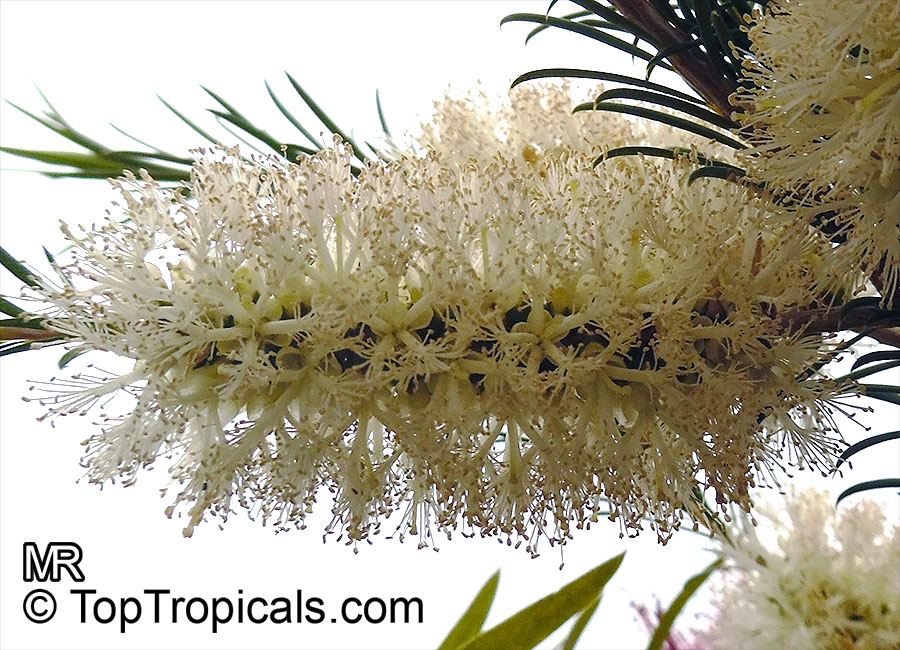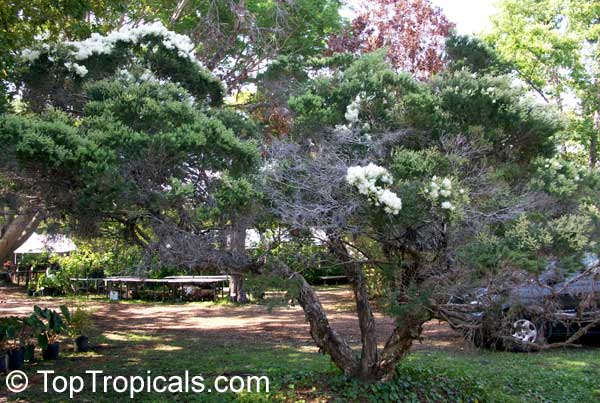Melaleuca alternifolia (Tea Tree)
Top Tropicals Plant Encyclopedia
Botanical name: Melaleuca alternifolia
Common names: Tea Tree, Snow-in-Summer
Family: Myrtaceae
Origin: Australia









Melaleuca alternifolia or Tea Tree is ideal for bonsai either in the ground or in a container. This species does well in a container and may be pruned to almost any shape and size. When grown in a pot, it requires moderate water in the Summer and slightly drier conditions in winter. Mature plants can handle short excursions of temperatures down to the low 30's F, but it's best to provide winter protection in regions of hard frosts. Although it can handle long dry spells, it prefers regular watering in the summer, which encourages more robust growth. For best result feed with a slow release fertilizer.
Melaleuca alternifolia is a native plant of Australia and is an evergreen shrub or small tree that can grow 5-20 ft tall. It has narrow linear leaves and produces profuse white, off-white flowers that are highly fragrant when rubbed. Tea Tree also has medicinal properties, producing an essential oil with antifungal and antibiotic properties.
Tea Tree grows best in full sun and moderately moist soils with good drainage. It is hardy in USDA Zones 9-11, but can handle short excursions of temperatures down to the low 30's F. It prefers regular watering in the summer, and slightly drier conditions in winter. For best result feed with a slow release fertilizer. It can be pruned to almost any shape, making it ideal for bonsai either in the ground or in a container. When grown in a pot, it requires moderate water in the Summer and slightly drier conditions in winter.
The Tea Tree is most famous for its essential oil, which is extracted from the leaves by steam distillation and marketed as Tea Tree Oil. This oil has anti-fungal and antibiotic properties and has a long history of use in aromatherapy. The native Australians used the therapeutic oil of this tree for a wide range of topical applications, including crushing the leaves to use as rubbing mediums and bathing in water that had collected under the trees.
In 1922, a paper was published in Australia about its wide-ranging antibacterial and antifungal activity. During World War II, Tea Tree Oil was in such short supply that all available stocks were used to treat infections in soldiers' war wounds. However, after the war, it was deemed necessary to find a cheaper, more readily available antimicrobial alternative, leading to a decline in the Tea Tree Oil industry.
In the 1990s, a scientific research team at the University of Western Australia conducted further studies on the effectiveness of Tea Tree Oil. They found that it was invaluable as a topical disinfectant for treating a strain of staphylococcus that had evolved to resist many synthesized antibacterial medicines. Tea Tree Oil has been used as a complementary therapy in surgery, burn care, and dental care, and is also used in a variety of body care products, including soap, shampoo, toothpaste, lip balm, topical cream, and essential oil.
Similar plants: Melaleuca alternifolia (Tea Tree)
- Melaleuca armillaris (Bracelet Honey Myrtle)
- Melaleuca cajuputi (Cajuput Tree)
- Melaleuca citrina (Common Red Bottlebrush)
- Melaleuca cuticularis (Saltwater Paperbark)
- Melaleuca decussata (Cross-leaved Honey-myrtle)
- Melaleuca elliptica (Granite Bottlebrush)
- Melaleuca ericifolia (Swamp Paperbark)
- Melaleuca huegelii (Chenille Honey-myrtle)
- Melaleuca quinquenervia (Paperbark)
- Melaleuca rugulosa (Scarlet Bottlebrush)
